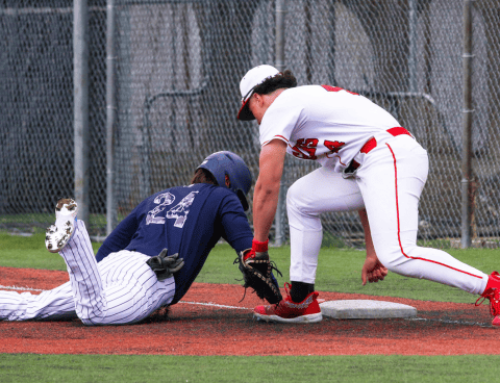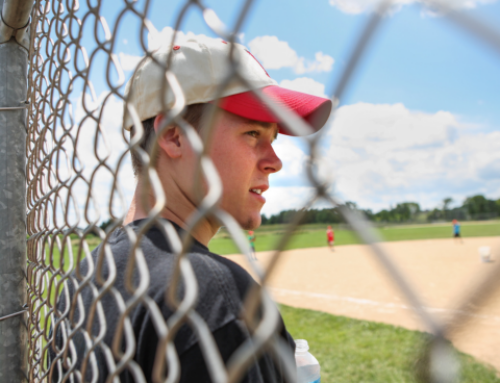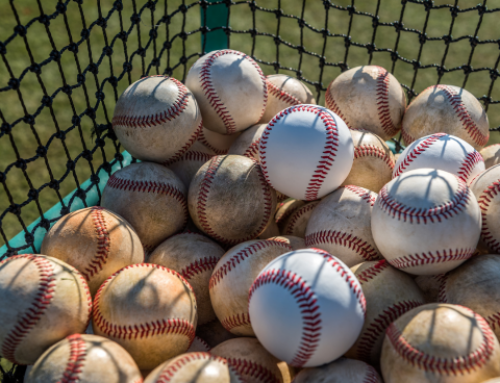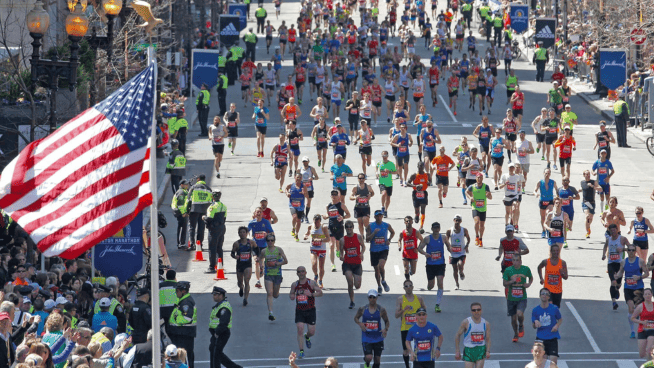Youth Pitchers Have a 350% Increased Risk of Injury When They Do This
I like to tell people I was never a good baseball player. I was a terrible hitter and a worse fielder, and I was nothing special while running the bases. But I could pitch. In fact, that was the only athletic thing I was decent at. I had a good enough fastball and a really good curveball, at least a good one for the high school level. When I got to play in college, let’s just say I didn’t get the swings and misses I used to enjoy from Little League through high school.
Driven by a relentless desire to excel, I immersed myself in the world of pitching. I trained rigorously, analyzed game footage, and delved into every available resource to enhance my skills. One recurring question in my quest for mastery was the ongoing debate among experts: what holds more weight: location or stuff? In other words, is it more crucial to hit your spots consistently or to possess a repertoire of formidable pitches?
Location or Stuff?
For decades, that answer was location. If you could hit the corners, you could make it far. Mark Buehrle, Jamie Moyer, and many other crafty lefties and even some righties had great careers with near-surgical precision despite having sub-par MLB pitches. But the end of their careers in the mid-2000s seemed to mark the end of the location era. More and more pitchers could throw hard—really hard.
Enter the velocity era. With the explosion of technology and the high demands of youth sports, pitchers with great “stuff” are everywhere, and it’s highly coveted. Every MLB franchise has multiple pitchers that can hit 100+ mph now, and those numbers will continue to grow.
However, with high velocities and increased workloads come greater risks. Youth and professional pitcher injuries have skyrocketed across the board. It’s no coincidence. Higher velocities and greater repetition at the youth level have primarily contributed to the massive throwing injury epidemic.
The Research
A decade-long study in the American Journal of Sports Medicine found a strong correlation between high workloads and injuries for youth pitchers. They found that young pitchers who threw more than 100 innings per year had a 350% greater incidence of injuries than those who threw fewer innings per year. And when I refer to injuries, I don’t mean tendinitis or sore shoulders. The criteria for injury in the study meant you either had surgery or had to retire from baseball due to arm pains or injuries. These kids were 9-14 years old, and they followed their careers for 10 years after.
One hundred innings is a lot. Way more than can be covered in your standard Little League season. However, factoring in today’s youth sports hysteria, 100 innings for a talented young pitcher is far too attainable. School teams, travel teams, fall ball, indoor winter ball, and baseball can become a year-round commitment for many.
There are many ways to reduce the likelihood of injury. Like anything in life, the way we move matters. Having proper mechanics can be very effective at reducing intra and post-game pains in addition to reducing the overall likelihood of injury. Nutrition matters, exercise matters, stress matters. There are many deterrents to injury. But all those things combined do not touch the value of proper workloads and volume of throwing. You can have the best mechanics, best coaches, and best technology, but those do not matter much if the workload isn’t managed.
The governing bodies of baseball have done a good job of stopping some of these reckless tactics on youth pitchers. I get it, the best pitcher on the team is the best pitcher, and largely determines your wins and losses. Coaches and players should be competitive, and sometimes that competitive spirit means overusing your best players. However, youth leagues and tournament officials have implemented more and more rules restricting the number of pitches and innings that are thrown, per the recommendations of some of the world’s best surgeons and trainers. But again, travel teams that go from one tournament to the next each weekend for 9+ months out of the year can easily eclipse throwing recommendations for their players.
The moral of the story is this: young athletes are growing. Repetition of the same motion does not cater to growth or skill development. Practicing something the wrong way for 10,000 reps will lead to dysfunction and injury. The key to the development of any skill requires the right dose. Athletes do need lots of reps to develop. But they also need rest and to not get overly fatigued during a game. More importantly, they need time to develop other skills away from baseball so as to not develop too much wear and tear on the same baseball motions year-round.
Youth pitchers should not exceed 100 innings per calendar year. They probably shouldn’t even surpass 75. Pitchers should also be encouraged to be willing to let the coach know their arm is tired and they should be done for the day. Limiting the number of pitches and innings is far and away the most important factor in preserving a young athlete’s future potential career.
RECOMMENDED FOR YOU
MOST POPULAR
Youth Pitchers Have a 350% Increased Risk of Injury When They Do This
I like to tell people I was never a good baseball player. I was a terrible hitter and a worse fielder, and I was nothing special while running the bases. But I could pitch. In fact, that was the only athletic thing I was decent at. I had a good enough fastball and a really good curveball, at least a good one for the high school level. When I got to play in college, let’s just say I didn’t get the swings and misses I used to enjoy from Little League through high school.
Driven by a relentless desire to excel, I immersed myself in the world of pitching. I trained rigorously, analyzed game footage, and delved into every available resource to enhance my skills. One recurring question in my quest for mastery was the ongoing debate among experts: what holds more weight: location or stuff? In other words, is it more crucial to hit your spots consistently or to possess a repertoire of formidable pitches?
Location or Stuff?
For decades, that answer was location. If you could hit the corners, you could make it far. Mark Buehrle, Jamie Moyer, and many other crafty lefties and even some righties had great careers with near-surgical precision despite having sub-par MLB pitches. But the end of their careers in the mid-2000s seemed to mark the end of the location era. More and more pitchers could throw hard—really hard.
Enter the velocity era. With the explosion of technology and the high demands of youth sports, pitchers with great “stuff” are everywhere, and it’s highly coveted. Every MLB franchise has multiple pitchers that can hit 100+ mph now, and those numbers will continue to grow.
However, with high velocities and increased workloads come greater risks. Youth and professional pitcher injuries have skyrocketed across the board. It’s no coincidence. Higher velocities and greater repetition at the youth level have primarily contributed to the massive throwing injury epidemic.
The Research
A decade-long study in the American Journal of Sports Medicine found a strong correlation between high workloads and injuries for youth pitchers. They found that young pitchers who threw more than 100 innings per year had a 350% greater incidence of injuries than those who threw fewer innings per year. And when I refer to injuries, I don’t mean tendinitis or sore shoulders. The criteria for injury in the study meant you either had surgery or had to retire from baseball due to arm pains or injuries. These kids were 9-14 years old, and they followed their careers for 10 years after.
One hundred innings is a lot. Way more than can be covered in your standard Little League season. However, factoring in today’s youth sports hysteria, 100 innings for a talented young pitcher is far too attainable. School teams, travel teams, fall ball, indoor winter ball, and baseball can become a year-round commitment for many.
There are many ways to reduce the likelihood of injury. Like anything in life, the way we move matters. Having proper mechanics can be very effective at reducing intra and post-game pains in addition to reducing the overall likelihood of injury. Nutrition matters, exercise matters, stress matters. There are many deterrents to injury. But all those things combined do not touch the value of proper workloads and volume of throwing. You can have the best mechanics, best coaches, and best technology, but those do not matter much if the workload isn’t managed.
The governing bodies of baseball have done a good job of stopping some of these reckless tactics on youth pitchers. I get it, the best pitcher on the team is the best pitcher, and largely determines your wins and losses. Coaches and players should be competitive, and sometimes that competitive spirit means overusing your best players. However, youth leagues and tournament officials have implemented more and more rules restricting the number of pitches and innings that are thrown, per the recommendations of some of the world’s best surgeons and trainers. But again, travel teams that go from one tournament to the next each weekend for 9+ months out of the year can easily eclipse throwing recommendations for their players.
The moral of the story is this: young athletes are growing. Repetition of the same motion does not cater to growth or skill development. Practicing something the wrong way for 10,000 reps will lead to dysfunction and injury. The key to the development of any skill requires the right dose. Athletes do need lots of reps to develop. But they also need rest and to not get overly fatigued during a game. More importantly, they need time to develop other skills away from baseball so as to not develop too much wear and tear on the same baseball motions year-round.
Youth pitchers should not exceed 100 innings per calendar year. They probably shouldn’t even surpass 75. Pitchers should also be encouraged to be willing to let the coach know their arm is tired and they should be done for the day. Limiting the number of pitches and innings is far and away the most important factor in preserving a young athlete’s future potential career.












